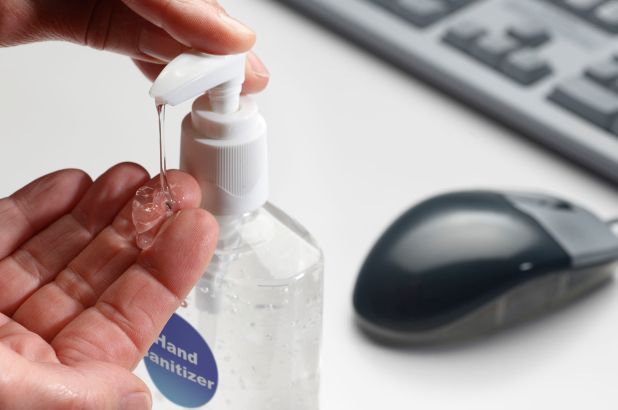Everyone agrees, including the Centers for Disease Control and Prevention (CDC), that if you want to avoid the transmission of disease, including the novel coronavirus, the best way to do that is to wash your hands thoroughly with soap and water, and avoid touching your face. But if you’re traveling, or otherwise don’t have access to soap and water, the next best thing is a hand sanitizer.
Can’t find one? You’re not alone. With increasing public awareness about the coronavirus outbreak, hand sanitizers are becoming difficult — if not impossible — to find. (A quick search on Amazon found most pocket-sized dispensers and wipes listed as “Currently unavailable.”)
However, if you really want some to carry around and can’t find any in your local Walgreens or CVS, you can make your own — and it really isn’t that hard. A wide range of sites (most of which are about saving money or reducing dependence on commercial products) have published explanations on how to mix up your own hand sanitizing formula.
Recipes differ slightly (for example, some recommend adding a scented oil while others keep that step optional). But there is general agreement that if you want to create your own hand sanitizer, you need to be aware of a few things:
- To be effective, hand sanitizer needs to have a strength of at least 60 percent isopropyl alcohol. Since you’re going to have to mix your sanitizer with aloe vera gel in order to stabilize it and protect your hands, most suggest that the mixture contain at least two-thirds 99 percent isopropyl (rubbing) alcohol and one-third gel. (You can probably ignore the occasional suggestion to use vodka instead of isopropyl alcohol — many vodkas are only 40 percent alcohol, and anyway, why waste good liquor?)
- The sanitizer is only effective if you cover your hands thoroughly and then let it dry. Squirting a few drops into your palms and then wiping your hands isn’t going to help at all.
- If your hands are heavily soiled or greasy, then, according to the CDC, a hand sanitizer isn’t going to do much.
Given a choice, though, the best thing you can do is to wash your hands and keep them away from your face.
Oh, and about your phone? There hasn’t been a lot of information (or concern) out there about spreading infection via your mobile devices, so don’t sweat it. However, since your phone is, according to the CDC, a “high-touch surface,” if you have any concerns that it has been shared with someone possibly exposed, you can use alcohol wipes to clean it off.
The Verge
More about: handsanitizer
















































